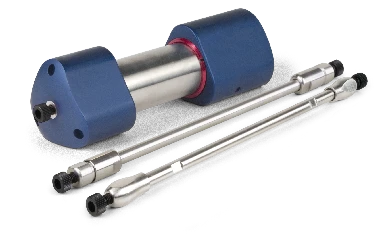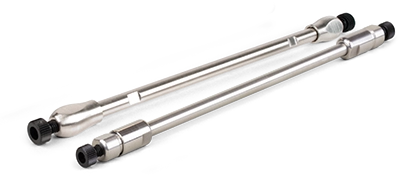
High Performance Liquid Chromatography (HPLC)
What Is HPLC?
High-performance liquid chromatography is a powerful analytical technique used to separate, identify, and quantify each component in a mixture. It is widely employed in various fields, such as pharmaceuticals, environmental monitoring, food and beverage analysis, and chemical research.
HPLC operates by passing a liquid sample through a column packed with solid adsorbent material under high pressure, enabling the separation of compounds based on their different interactions with the stationary phase.

What Are HPLC Columns?
HPLC columns are critical components in the HPLC system, responsible for the actual separation of the sample components. These columns are typically made of stainless steel and packed with tiny, uniform particles known as the stationary phase. The choice of stationary phase material and the column's dimensions (length, diameter, and particle size) significantly influence the separation process and the efficiency of the analysis. Coupled with sensitive detector systems, HPLC has become a widely employed method for confirming drug identity, providing quantitative results, and monitoring therapeutic progress in disease management.
HPLC Column Types
Shop by HPLC Column Brands
How to Choose the Correct HPLC Column?
Choosing the correct HPLC column is essential for achieving optimal separation and analysis of compounds. Several factors need to be considered when selecting a column for HPLC:
- Sample Properties: Understand the properties of the sample being analyzed, such as polarity, size, and chemical nature. Match these characteristics with the appropriate stationary phase chemistry and column type.
- Analyte Stability: Consider the stability of the analytes during the separation process. Choose column and mobile phase conditions that minimize degradation or interaction with the stationary phase.
- Separation Objective: Determine the specific compounds or classes of compounds you need to separate and analyze. Select a column type that provides the required selectivity, resolution, and efficiency for your application.
- Column Dimensions: Consider the dimensions of the column, including length, diameter, and particle size. Longer columns with smaller particle sizes typically offer higher resolution but may require longer analysis times.
- Mobile Phase Compatibility: Ensure compatibility between the mobile phase and stationary phase chemistry to prevent interactions that could affect separation efficiency and column performance.
- Sample Matrix: Consider the composition of the sample matrix and potential interferences. Choose a column that can effectively separate the target analytes from matrix components.
- Budget and Resources: Consider practical factors such as budget constraints, availability of columns, and equipment compatibility.

How do High-Performance Liquid Chromatography (HPLC) Columns Work?
Columns for HPLC are key components that facilitate the separation of analytes in chromatographic analysis. These analytical columns in HPLC contain a stationary phase, which interacts with the sample components as they pass through the column under high pressure. Choosing the column type and conditions is crucial for achieving efficient and selective separation of analytes in HPLC analysis.
Mobile Phase
The mobile phase is a liquid solvent or solvent mixture that transports analytes through the HPLC column. Its composition—solvent type, pH, and buffer concentration—directly affects separation efficiency, resolution, and selectivity. Common solvents include water, acetonitrile, methanol, and buffered solutions, chosen based on the analyte’s properties. Optimizing the mobile phase is key to achieving reliable and high-performance chromatographic results.
Stationary Phase
The stationary phase is the material packed inside the HPLC column where analytes are separated based on their chemical properties. It interacts with analytes through differences in polarity, size, charge, and other chemical properties. Common types include reversed-phase, normal-phase, ion exchange, and affinity chromatography. Materials are typically silica-based or polymeric, selected to match the application and desired separation.




















